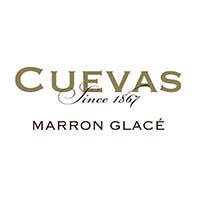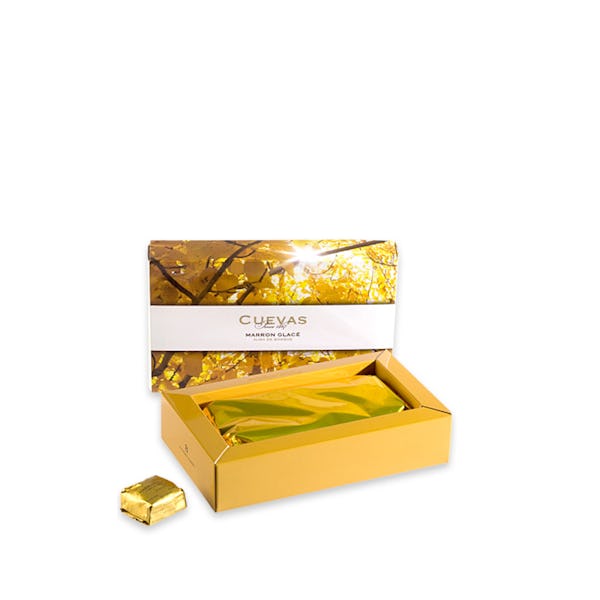
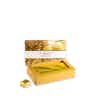
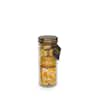
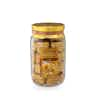
TASTING NOTES FROM THE CURATOR
Chestnuts roasting on an open fire, that’s the traditional image of a treat on a snowy day. Marron glaces—candied chestnuts—are the quintessential holiday treat. The nuts are cooked in syrup to about 73-75ºC, giving them texture similar to a dried apricot or prune, with a mild sweetness and nuttiness similar to sweet potatoes.
PREPARATION OR PAIRINGS
The traditional way to eat marron glaces is straight out of the box, with a warm cup of medium-bodied black tea at your side, like Darjeeling or our Gryphon Earl Grey Loose Leaf Tea.
Marron glaces can be used in different desserts, too. Chop marron glaces into your sugar cookie dough or add them to your banana bread batter. If you’d prefer something simpler after a decadent dinner, place a few pieces on your vanilla ice cream. Up your cream cheese game with honey and candied chestnuts on top, with crackers or toasted pita bread on the side. For canapes, load a cracker with Brie, a bit of pancetta or bacon, and place one marron glace right on top. Fancy a Christmas morning treat? Chop up some candied chestnuts and sprinkle a bit of cinnamon into your breakfast oatmeal.
A VERSAILLES TREAT
When crusaders returned from the Holy Lands, they brought sugar back with them. Once they returned to southern France, cooks started incorporating sugar into their desserts—particularly the local chestnuts. One of the earliest mentions of marron glaces comes from the court of Louis XIV in 16th-century France. The treat was popularized by the opulent monarch and all his courtiers. They fell out of fashion shortly after the French Revolution but by the 1800s, marron glaces had reemerged as a commercially available treat.
Storage Instructions
Store your candied treat in a cool, dry place. Do not allow the fruit to become frozen. If you must transfer it out of its original packaging, place it in an airtight tin.

